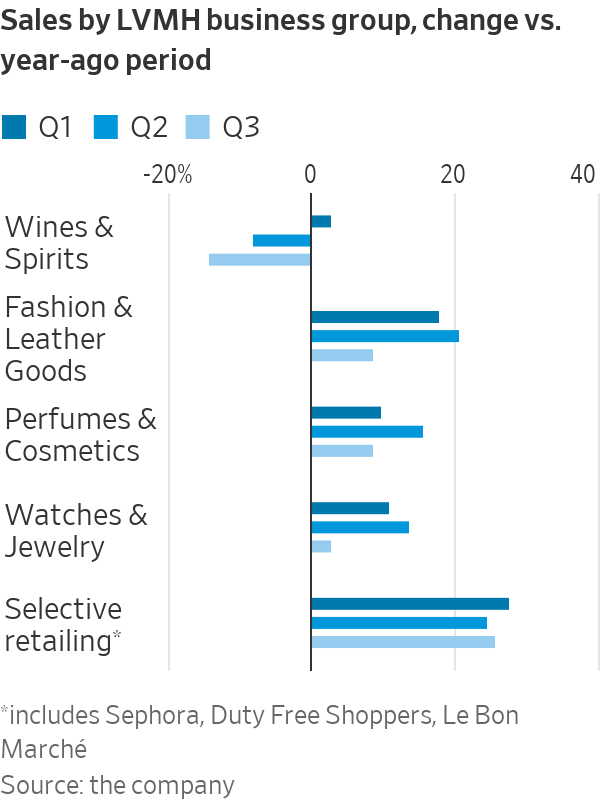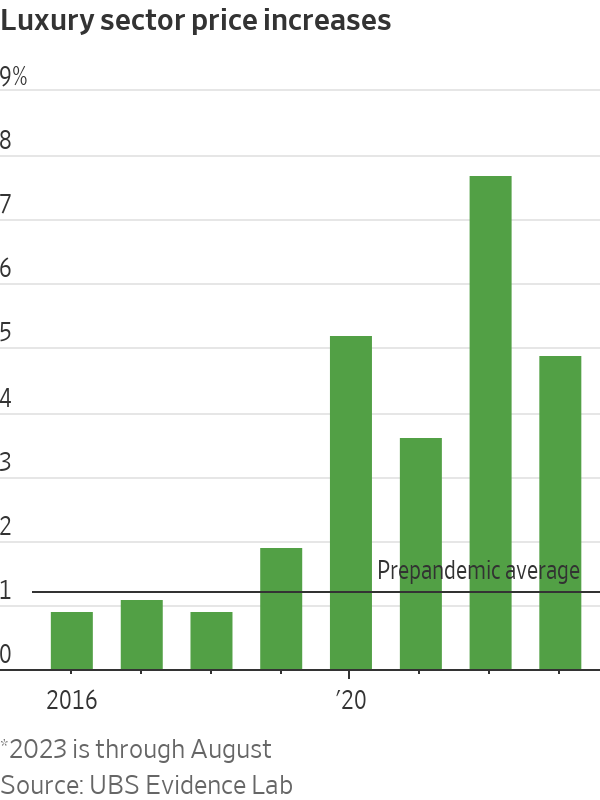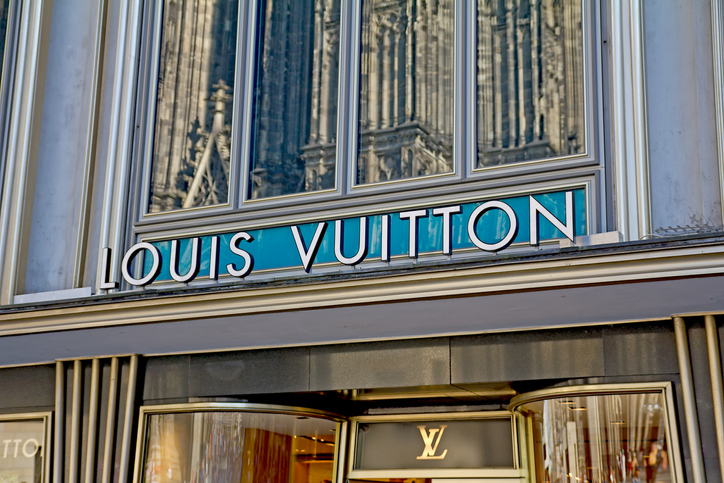A Gilded Age Is Fading for Luxury Brands
The latest results from Louis Vuitton owner LVMH show that luxury shoppers are sobering up after years of heavy spending
The end of easy money is catching up with luxury brands. It took a long time, so the skills needed to protect their profit margins may be a bit rusty.
Shares in the world’s biggest luxury company, LVMH Moët Hennessy Louis Vuitton, fell 6% Wednesday after it reported a slowdown in sales for the third quarter the previous evening. LVMH grew sales by 9% for the three months through September compared with a year ago. That sounds impressive, but the business was growing at almost double this pace in the second quarter.
Demand for luxury goods has slowed for most products and in all major regions. One surprise was a 14% drop in sales at LVMH’s wines and spirits divisions. Shipments of cognac brands such as Hennessy have been weak in the U.S. all year as cash from pandemic stimulus checks runs out, but the trend is getting worse.

The slowdown is no longer limited to “aspirational” shoppers, as the industry lingo frames less wealthy buyers. Sales of LVMH’s expensive watch and jewellery brands were weaker than analysts expected. And wealthy European consumers who were spending freely on luxury goods early this summer turned cautious in the third quarter.
Investors knew that a slowdown was coming, but not how big it would be. After Wednesday’s share-price drop, LVMH has lost a quarter of its market value in roughly six months. The slump may be more severe at weaker rivals like Burberry or Gucci owner Kering, whose stocks also fell Wednesday. Recently, the entire luxury industry has fallen out of fashion with shareholders, who at the start of the year expected a bigger surge in Chinese demand after the country lifted all pandemic restrictions.
With business probably as good as it can get in China, there is no obvious place the industry can turn to for new growth. Weaker demand for luxury goods will damp brands’ ability to raise prices. Last year, exceptionally strong sales helped them lift prices by 8% on average, according to UBS estimates. This pricing power has been a big draw for investors, and boosted profit margins, but it is probably over for now. In the four years leading up to the pandemic, prices rose only 1.2% annually on average.

Luxury companies face a balancing act with their multibillion-dollar advertising budgets and store-rollout plans. They may need to save cash to protect margins. At the same time, they must continue to spend on advertising to maintain their trademark desirability.
Some perspective is necessary, though: Today, LVMH’s fashion-and-leather-goods division, its main profit driver, is 80% larger than it was in the third quarter of 2019, before the pandemic. The industry has had an amazing run and is expected to grow in 2024. Still, some of the sheen that made it particularly attractive to investors in recent years has faded.
Last month, LVMH was even dethroned as Europe’s most valuable company by Novo Nordisk, the Danish pharmaceutical company behind weight-loss drug Ozempic. Leaner times ahead.
 Copyright 2020, Dow Jones & Company, Inc. All Rights Reserved Worldwide. LEARN MORE
Copyright 2020, Dow Jones & Company, Inc. All Rights Reserved Worldwide. LEARN MORE
This stylish family home combines a classic palette and finishes with a flexible floorplan
Just 55 minutes from Sydney, make this your creative getaway located in the majestic Hawkesbury region.
More than one fifth of Australians are cutting back on the number of people they socialise with
Australian social circles are shrinking as more people look for ways to keep a lid on spending, a new survey has found.
New research from Finder found more than one fifth of respondents had dropped a friend or reduced their social circle because they were unable to afford the same levels of social activity. The survey questioned 1,041 people about how increasing concerns about affordability were affecting their social lives. The results showed 6 percent had cut ties with a friend, 16 percent were going out with fewer people and 26 percent were going to fewer events.
Expensive events such as hens’ parties and weddings were among the activities people were looking to avoid, indicating younger people were those most feeling the brunt of cost of living pressures. According to Canstar, the average cost of a wedding in NSW was between $37,108 to $41,245 and marginally lower in Victoria at $36, 358 to $37,430.
But not all age groups are curbing their social circle. While the survey found that 10 percent of Gen Z respondents had cut off a friend, only 2 percent of Baby Boomers had done similar.
Money expert at Finder, Rebecca Pike, said many had no choice but to prioritise necessities like bills over discretionary activities.
“Unfortunately, for some, social activities have become a luxury they can no longer afford,” she said.
This stylish family home combines a classic palette and finishes with a flexible floorplan
Just 55 minutes from Sydney, make this your creative getaway located in the majestic Hawkesbury region.






















